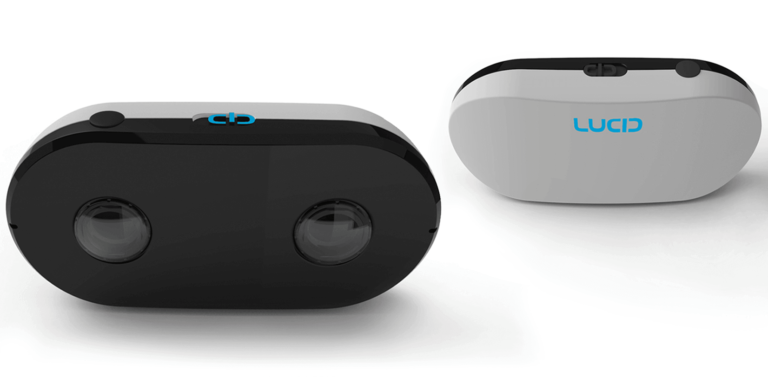
One of VR’s biggest gating factors is accessibility. Consumers don’t have access to high-end VR headsets on a mass scale. Content creators correspondingly are challenged to justify a business case for high-production or long-form content without that installed base.
This classic chicken-and-egg dilemma — seen in most emerging consumer technology — also applies to consumer VR content creation. The capability is largely held up in early and expensive devices like GoPro’s Omni and Odyssey rigs, which we got to see closeup last week.
Mind the Gap
That accessibility gap is what LucidCam fills. We got the chance to catch up with CEO Han Jin about “democratizing” VR content capture with its eponymous camera that captures HD stereoscopic content. Footage is then viewable in a wide range of headsets or screens.
This versatility and compatibility are core to the company’s overall theme of democratization. The way this plays out on the user end is that content captured by a LucidCam can be viewed in 2D (if they don’t have a VR headset) or in full stereoscopic mode.
As far as device specs, they likewise carry the company’s principle of accessibility and compatibility. The camera is built for speed, given the design choice to focus on 180 degree capture. This reduces things like file size and post production stitching.
It’s also portable which opens up lots of use cases — everything from trail running to social interactions. Portability also applies to professional-grade uses such as VR videographers taking “test shots” in the field… the same way photographers use polaroids today.
It’s all About Timing
LucidCam’s timing is apt, as mainstream outlets like YouTube offer “cardboard mode,” to toggle between flat and stereoscopic, depending on users’ viewing context. Facebook is also acclimating the world to VR through 2D news feed integration (livestreaming is next).
Speaking of Facebook, LucidCam is well aligned with the directions that the influential tech giant is driving the market. The company’s ethos and founding principles have ties to Mark Zuckerberg’s vision of VR’s dominance in social interaction and immersion.
Jin’s impetus for launching the company in fact was to have a more immersive and realistic communication with his grandmother in China. Indeed, one of VR’s killer apps will be social contact with far flung loved ones (think: grandparents viewing baby’s first steps).
Beyond that, we’ll see unintended use cases emerge, as they often do in early days of new consumer technologies. As I said at last week’s event, we’re in an “iPhone 1” moment with VR. And as discussed with GoPro, the world at large is in “beta-testing mode” with VR cameras.
